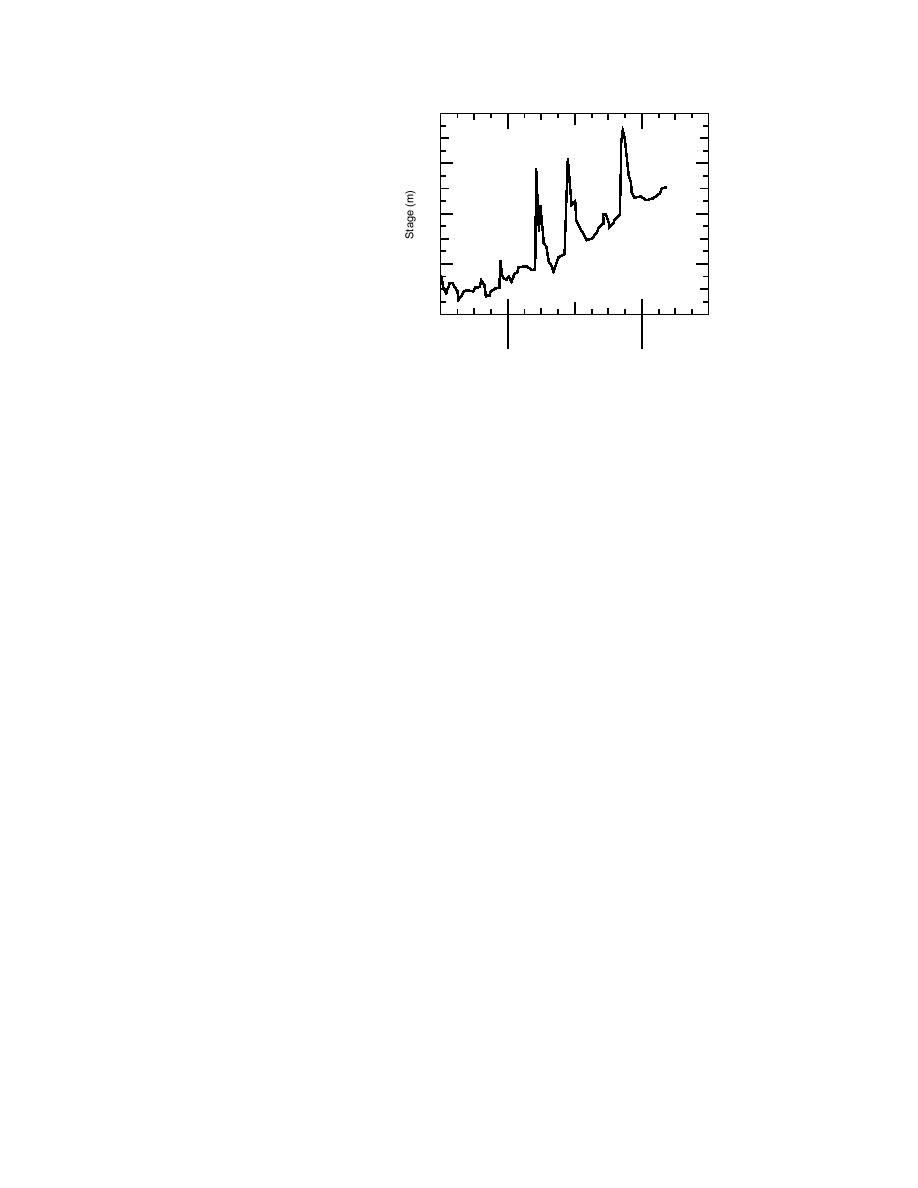
2.8
2.4
2.0
Figure 11. Stage record for
USGS station no. 0101000 on
the St. John River in Maine dur-
1.6
ing 1994 breakup.
1.2
12 Noon
12 Noon
12 Noon
21 Apr
22 Apr
23 Apr
Dominant formation process
Ice jams are also classified in terms of the processes dominating their formation.
The important processes are transport and deposition of ice, congestion of ice, and
shoving and thickening of ice.
Jams known as "hanging dams" are local, thick accumulations of frazil ice. Frazil
ice arriving at the upstream edge of an existing ice cover may submerge and travel
beneath the cover until reaching an area of lower water velocity, where it deposits
on the underside of the cover. These formations, or hanging dams, may continue to
develop during the entire winter season, growing up to thicknesses of 20 m. Large
hanging dams may constrict flow and block the downstream passage of ice, occa-
sionally initiating more severe breakup jams.
A congestion or surface jam forms when ice transport along the water surface is
reduced by shore ice growth, transverse floating objects, or channel constrictions,
such as bridges. This initiation method is typical of both freezeup and breakup
jams. Water flow is fairly steady for congestion jams, which, initially at least, are
relatively thin (i.e., single floe thickness).
A submergence or frontal progression type of jam typically forms at some trans-
verse floating barrier, such as an intact ice cover. Arriving ice floes tip and sub-
merge, but come to rest almost immediately at the upstream edge of the obstruc-
tion, causing the jam to progress upstream. This type of jam, often called a narrow
channel jam, primarily forms during the freezeup of contacting frazil pans.
Given a steady ice supply from upstream, both the congestion and frontal pro-
gression type of jams may grow to a point beyond which they are not able to with-
stand the increased streamwise load exerted by additional ice conveyed to the jam
or by increased discharge. Then, shoving and thickening occur. A jam formed by
shoving and thickening is sometimes termed a wide channel jam. It will remain in
place as long as the downstream acting forces of water shear and gravity (and pos-
sibly wind shear) can be resisted by the jam's strength and resistive shear stresses
acting between the ice and the banks. If the load (water drag and ice weight)
becomes too great, the jam must thicken to increase its resistance to downstream
movement. Thickening increases both the jam's strength and the shear stress
between the jam and the bank.
Once a jam collapses, thickens, and possibly moves downstream, jam reforma-
tion becomes highly unsteady. The shear stress exerted on the jam underside
reduces as it begins moving, which in turn increases water velocity and reduces
10



 Previous Page
Previous Page
